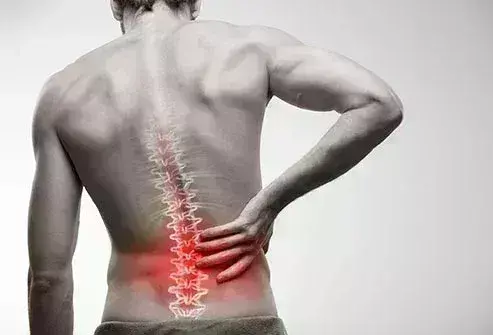- Home
- Medical news & Guidelines
- Anesthesiology
- Cardiology and CTVS
- Critical Care
- Dentistry
- Dermatology
- Diabetes and Endocrinology
- ENT
- Gastroenterology
- Medicine
- Nephrology
- Neurology
- Obstretics-Gynaecology
- Oncology
- Ophthalmology
- Orthopaedics
- Pediatrics-Neonatology
- Psychiatry
- Pulmonology
- Radiology
- Surgery
- Urology
- Laboratory Medicine
- Diet
- Nursing
- Paramedical
- Physiotherapy
- Health news
- Fact Check
- Bone Health Fact Check
- Brain Health Fact Check
- Cancer Related Fact Check
- Child Care Fact Check
- Dental and oral health fact check
- Diabetes and metabolic health fact check
- Diet and Nutrition Fact Check
- Eye and ENT Care Fact Check
- Fitness fact check
- Gut health fact check
- Heart health fact check
- Kidney health fact check
- Medical education fact check
- Men's health fact check
- Respiratory fact check
- Skin and hair care fact check
- Vaccine and Immunization fact check
- Women's health fact check
- AYUSH
- State News
- Andaman and Nicobar Islands
- Andhra Pradesh
- Arunachal Pradesh
- Assam
- Bihar
- Chandigarh
- Chattisgarh
- Dadra and Nagar Haveli
- Daman and Diu
- Delhi
- Goa
- Gujarat
- Haryana
- Himachal Pradesh
- Jammu & Kashmir
- Jharkhand
- Karnataka
- Kerala
- Ladakh
- Lakshadweep
- Madhya Pradesh
- Maharashtra
- Manipur
- Meghalaya
- Mizoram
- Nagaland
- Odisha
- Puducherry
- Punjab
- Rajasthan
- Sikkim
- Tamil Nadu
- Telangana
- Tripura
- Uttar Pradesh
- Uttrakhand
- West Bengal
- Medical Education
- Industry
Bilateral USG-guided ESP block decreases short-term opioid consumption after lumbar spinal fusion surgery

Both Erector Spinae Plane (ESP) block and wound infiltration are used to improve analgesia following spinal fusion surgery. Zhen Zhang et al conducted a study to compare the analgesic effect of bilateral erector spinae plane block with wound infiltration in this patient population. The study has been published in ‘European Spine Journal.’
In this randomized trial, 60 patients scheduled for elective open posterior lumbar interbody fusion surgery were randomized to receive either ultrasound-guided bilateral erector spinae plane block before incision (n=30) or wound infiltration at the end of surgery (n=30).
For patients assigned to erector spinae plane block, a 8-cm 21-gauge block needle was inserted in an out-of-plane mode until it contacted the target transverse process. After verifying the position of the needle tip with 2 mL normal saline, 20 mL 0.375% ropivacaine was injected. The procedure was repeated on the contralateral side. For patients assigned to wound infiltration, 40 mL of 0.375% ropivacaine was infiltrated along each side of the wound edges after closure.
Both groups received standardized general anesthesia and postoperative analgesia, including patient-controlled analgesia with sufentanil and no background infusion. Opioid consumption and pain intensity were assessed at 2, 6, 12, 24, and 48 h after surgery. The primary outcome was cumulative opioid consumption within 24 h after surgery.
Key findings of the study were:
• All 60 patients were included in the intention-to-treat analysis.
• The equivalent dose of sufentanil consumption within 24 h was significantly lower in patients given erector spinae plane block (median 11 μg, interquartile range 5–16) than in those given wound infiltration (20 μg, 10 to 43; median diference−10 μg, 95% CI−18 to−3, P=0.007).
• The cumulative number of demanded PCA boluses was significantly lower with erector spinae plane block at 6 h (median diference−2, 95% CI−3 to 0, P=0.006), 12 h (−3, 95% CI−6 to−1, P=0.002), and 24 h (−5, 95% CI−8 to−2, P=0.005) postoperatively.
• The proportion given rescue analgesia was also significantly lower in patients given erector spinae plane block group within 48 h (relative risk 0.27, 95% CI 0.07 to 0.96, P=0.037).
• There were no statistical differences in pain intensity at any timepoints between groups.
• No procedure-related adverse events occurred.
The authors opined – ‘In conclusion, compared with wound infiltration, bilateral ultrasound-guided ESP block decreases short-term opioid consumption while providing similar analgesia in patients following lumbar spinal fusion surgery. A bilateral ESP block may be recommended in these patients considering its opioid-sparing effects.’
Further reading:
Bilateral ultrasound guided erector spinae plane block versus wound infiltration for postoperative analgesia in lumbar spinal fusion surgery: a randomized controlled trial
Zhen Zhang, Ran Lyu Zhu et al
European Spine Journal
MBBS, Dip. Ortho, DNB ortho, MNAMS
Dr Supreeth D R (MBBS, Dip. Ortho, DNB ortho, MNAMS) is a practicing orthopedician with interest in medical research and publishing articles. He completed MBBS from mysore medical college, dip ortho from Trivandrum medical college and sec. DNB from Manipal Hospital, Bengaluru. He has expirence of 7years in the field of orthopedics. He has presented scientific papers & posters in various state, national and international conferences. His interest in writing articles lead the way to join medical dialogues. He can be contacted at editorial@medicaldialogues.in.
Dr Kamal Kant Kohli-MBBS, DTCD- a chest specialist with more than 30 years of practice and a flair for writing clinical articles, Dr Kamal Kant Kohli joined Medical Dialogues as a Chief Editor of Medical News. Besides writing articles, as an editor, he proofreads and verifies all the medical content published on Medical Dialogues including those coming from journals, studies,medical conferences,guidelines etc. Email: drkohli@medicaldialogues.in. Contact no. 011-43720751


